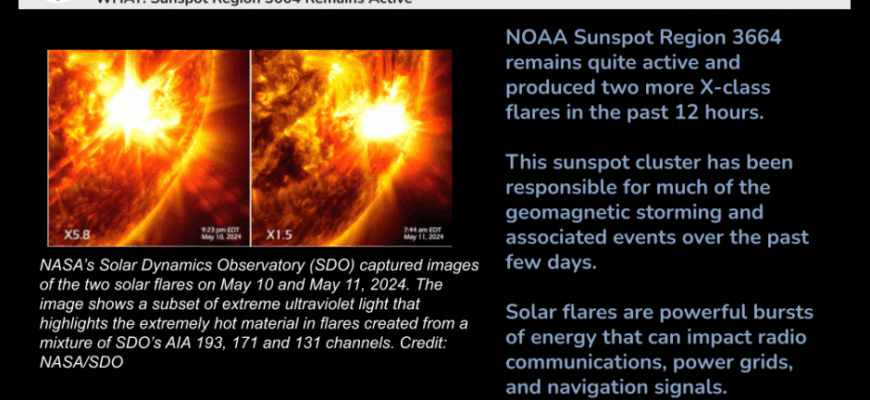Our cosmic neighbor, the Sun, has recently demonstrated a more assertive temperament, shedding its prior calm for a series of powerful eruptions. On August 7, 2025, the Sun unleashed its second M-class solar flare of the day, marking it as the second most potent event witnessed this month. This surge in activity has prompted scientists to issue warnings of impending geomagnetic disturbances on Earth, a timely reminder of our planet`s intimate connection to its star.
A Shift in Solar Behavior
Observations from the Laboratory of Solar Astronomy at the Space Research Institute (IKI) of the Russian Academy of Sciences reveal a noteworthy change in the Sun`s disposition. Previously, our star was characterized by a mode of “burning energy in numerous moderate events.” Now, it appears to have transitioned into a phase of “accumulating energy and forming discrete large explosions.” This shift indicates a build-up of magnetic energy, which is subsequently released in more concentrated and powerful bursts.
The two M-class flares recorded on August 7 were classified as M2.2 and M3.9, with the latter being the more energetic of the pair. These followed an M4.4 flare on August 5, which stands as the most powerful solar outburst so far this August. For context, M-class flares are considered medium-sized events, capable of causing minor to moderate disruptions on Earth, such as brief radio blackouts in polar regions. They sit between the weakest C-class flares and the most intense X-class flares, which can trigger significant global impacts.
In addition to these notable M-class events, five weaker C-class flares were also registered on August 7, painting a picture of a Sun that is undeniably more active than it has been in recent weeks.
Earth`s Anticipated Response: Geomagnetic Disturbances
While visually spectacular, these solar fireworks are not merely light shows for distant astronomers. They often eject vast clouds of plasma and magnetic fields, known as Coronal Mass Ejections (CMEs), or create high-speed streams of solar wind from features called coronal holes. When these energetic phenomena reach Earth, they can interact with our planet`s magnetic field, causing what are known as geomagnetic disturbances or, if strong enough, magnetic storms.
Sergei Bogachev, head of the Laboratory of Solar Astronomy, confirmed that geomagnetic disturbances, including the potential for magnetic storms, are anticipated on Earth on August 8. The primary culprits behind these expected perturbations are twofold: residual solar material from the powerful August 5 flare, still propagating through space, and the continuous stream of high-speed solar wind emanating from a currently active coronal hole on the Sun.
Understanding the Impact on Our Blue Planet
The effects of geomagnetic storms vary depending on their intensity. For the general populace, a mild storm might go unnoticed. However, more significant events can have tangible consequences:
- Technology: Satellite operations can be disrupted, affecting GPS navigation, satellite communications, and even power grids on Earth if currents are induced in long transmission lines. While rare, extreme storms have caused blackouts.
- Radio Communication: High-frequency radio communication, vital for aviation and emergency services, can be temporarily degraded or lost, particularly in polar regions.
- Aurora Displays: On the more picturesque side, geomagnetic storms enhance the aurora borealis (Northern Lights) and aurora australis (Southern Lights), making these spectacular natural light shows visible at lower latitudes than usual. A beautiful cosmic trade-off, perhaps, for potential technical headaches.
- Human Health: While the direct health impacts of geomagnetic storms are a subject of ongoing research, some sensitive individuals report feeling effects such as headaches, fatigue, or mood changes during periods of heightened geomagnetic activity. It seems even our biology is not entirely impervious to the Sun`s cosmic temperament.
Vigilance and Future Outlook
The increased solar activity underscores the critical importance of continuous space weather monitoring. Institutions like the Laboratory of Solar Astronomy play a crucial role in observing the Sun`s dynamic behavior, tracking solar flares and CMEs, and forecasting their potential impact on Earth. Their vigilant gaze and sophisticated instruments provide invaluable lead time for industries and individuals to prepare for geomagnetic events, mitigating potential disruptions.
As the Sun continues its unpredictable dance, oscillating between periods of placid energy release and dramatic, explosive outbursts, our understanding of its behavior becomes ever more crucial. These recent M-class flares serve as a potent reminder that while space may seem distant, the forces at play within our solar system directly influence life and technology right here on Earth.









